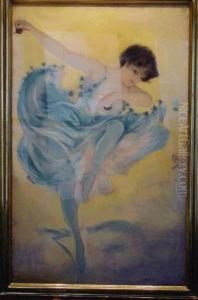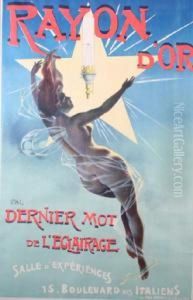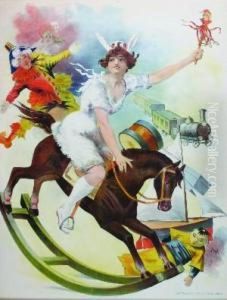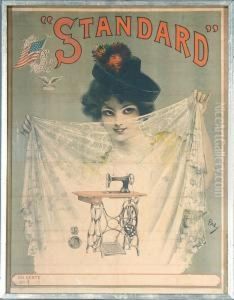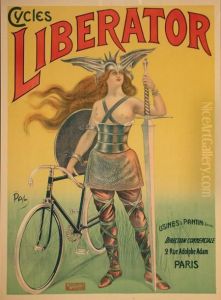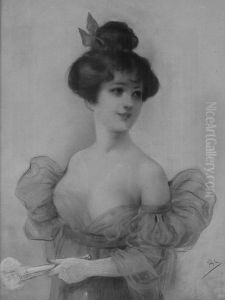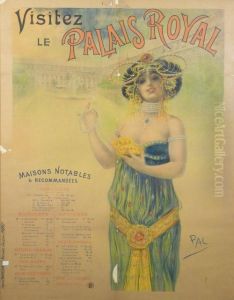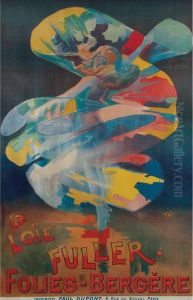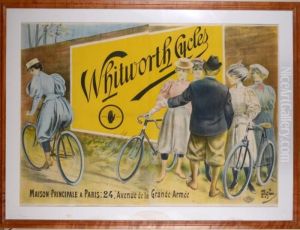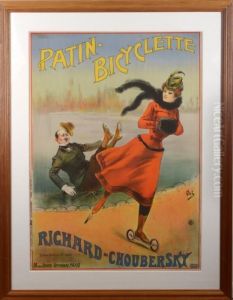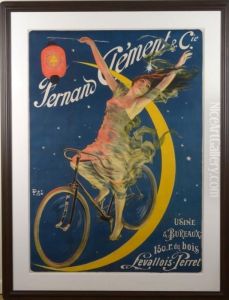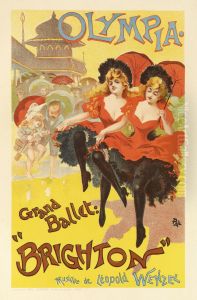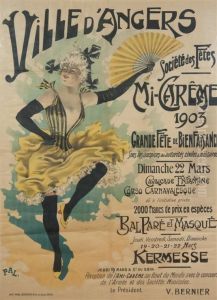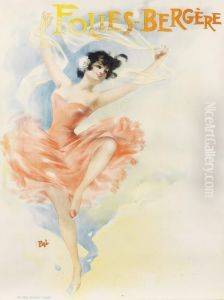Jean De Paleologue Paintings
Jean de Paleologu, born in 1855 in Bucharest, Romania, was a distinguished artist known for his contributions to the world of poster art, illustration, and caricature. Often working under the pseudonym PAL, he became a prominent figure in the Belle Époque era, a period marked by cultural flourishing in Europe before World War I. His early life in Romania, part of a noble family with Byzantine roots, influenced his artistic development and instilled in him a sense of elegance and sophistication that would later characterize his work.
After moving to Paris in the late 19th century, Jean de Paleologu quickly immersed himself in the vibrant art scene of the city. Paris, at the time, was the epicenter of the art world, attracting artists from across the globe. It was here that PAL began to make a name for himself, particularly in the realm of poster art, a genre that was burgeoning thanks to the advancements in printing technology and the growing demand for commercial advertising.
PAL's work was characterized by its vibrant colors, dynamic compositions, and often, an underlying sense of humor. He became best known for his posters advertising plays, operas, and other entertainment venues, as well as for publications and commercial products. His art captured the spirit of the Belle Époque, with its emphasis on beauty, innovation, and leisure.
Among his notable works were posters for famous performers and productions of the day, including the legendary actress Sarah Bernhardt and the Moulin Rouge. His style was influential in the development of Art Nouveau, contributing to the movement's ornate yet streamlined aesthetic. PAL's ability to blend illustration with typography in a harmonious and appealing way set new standards for poster design, making his work highly sought after by collectors and advertisers alike.
In addition to his poster art, Jean de Paleologu was also a skilled caricaturist, contributing to various magazines and periodicals. His caricatures often depicted celebrities and politicians, showcasing his keen observation and wit.
Despite his success in France, details about PAL's later life are less well-documented. He eventually moved to the United States, where he continued to work as an artist until his death in 1942. Today, Jean de Paleologu's legacy lives on through his contributions to the art of the poster, and his works remain a testament to the vibrancy and elegance of the Belle Époque era.
